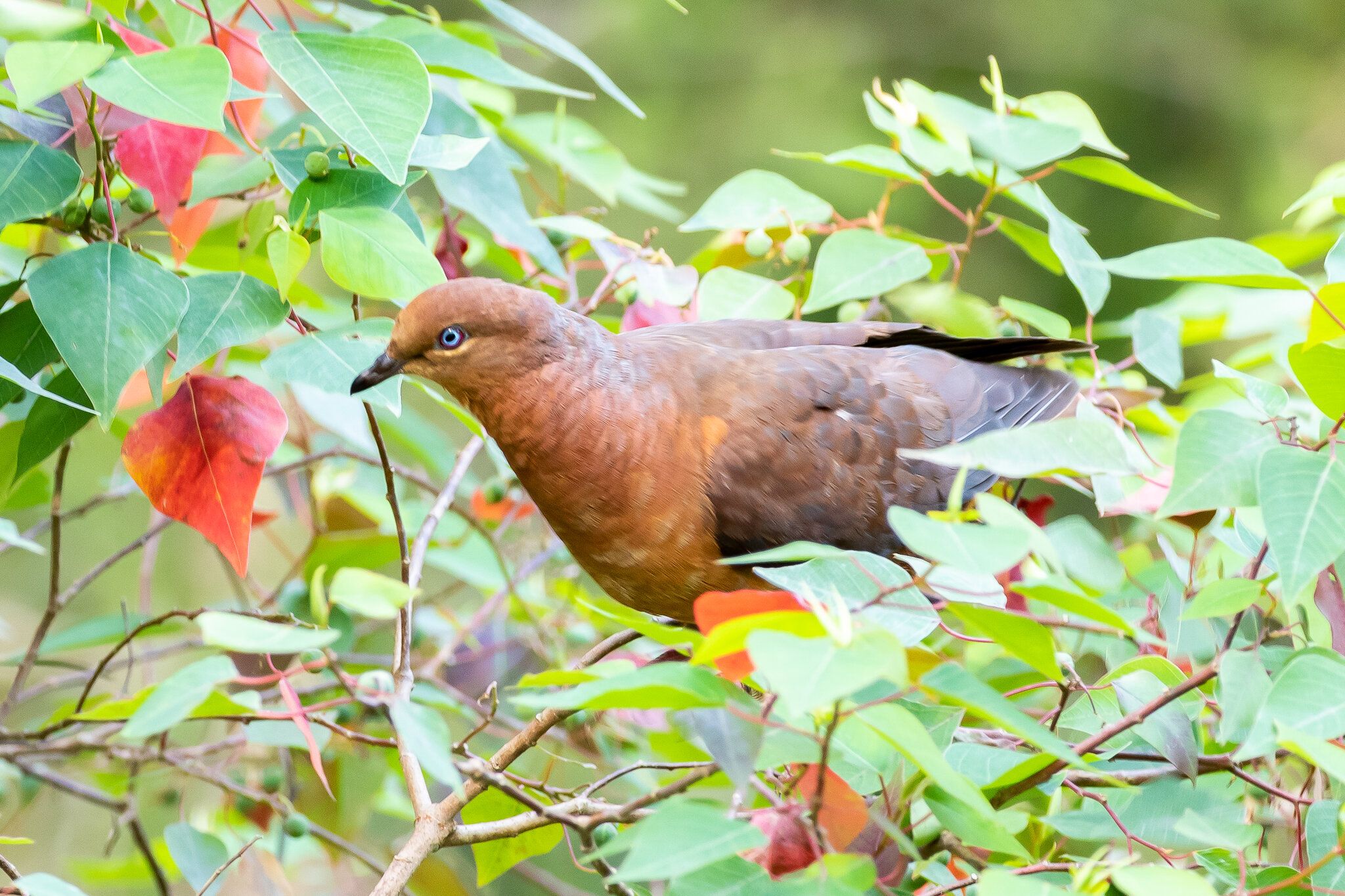The Myall lakes wind through an ancient riverbed where the New England Fold belt meets and overthrusts the Sydney Basin rocks - bounded seaward by sandhills that were laid down 60,000 years ago and a coastal sand belt formed 6,000 years ago. The national park covers 44,000 hectare and is 50 km north of Newcastle in NSW. Its wetlands are Ramsar listed with 18 different wetland types. Black-necked Storks, Comb-crested Jacanas, and White-bellied Sea-Eagles are among the 280 species of bird reported here. And the park is home to 41 species of mammal, 15 amphibians and 16 reptiles.
Several Brown Cuckoo-Doves were regular visitors to the pond side trees opposite our Tiny House on Bombah Point Road.
Our accommodation for the weekend was a Tiny House on Bombah Point Road, set in spacious and bushy grounds. The visit started well with two Glossy Black-Cockatoos and a pair of Tawny Frogmouths roosting close by. Bird watching from the Tiny House deck added Blue-faced Honeyeaters, Lewin’s Honeyeaters, Yellow-faced Honeyeaters, Eastern Spinebills, Brown Cuckoo-Doves, and a Wonga Pigeon, with several endlessly busy Grey Butcherbirds feeding on the lawns.
One of the Grey Butcherbirds feeding on prey exposed by what was a very wet lawn (gumboots recommended).
At Mungo Beach were groups of Crested Terns, two Pied Oystercatchers and the usual Silver Gulls. There was a White-cheeked Honeyeater calling in the car park.
Noisy Friarbirds commanded the taller trees, competing with a small group of Noisy Miners.



